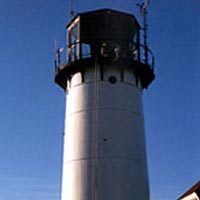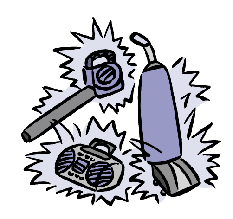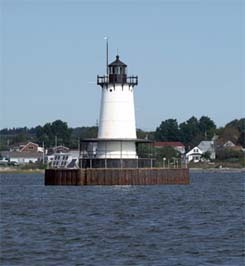
- Capital City:
- Boston
- Nickname:
- Bay State / Old Colony State
- Motto:
- Ense Petit Placidam Sub Libertate quietem (By the Sword We Seek Peace, But Peace Only Under Liberty)
- Statehood:
- May 16, 1788 (6th)
- Origin of State's Name:
- Named after local Indian tribe whose name means "a large hill place."
- Largest Cities:
- Boston, Worcester, Springfield, Lowell, New Bedford
- Border States:
- Connecticut, New Hampshire, New York, Rhode Island, Vermont
- Land Area:
- 7,838 sq. mi.; 45th largest
- State Bird:
- Black-capped Chickadee (Penthestes atricapillus)
- State Flower:
- Mayflower (epigaea regens)
- State Tree:
- American Elm (ulmus americana)
- State Song:
- Hail Massachusetts
One of the six New England states, and one of the first 13 states in the Union (it entered in 1788), Massachusetts is known as the "Old Colony State." The Pilgrims established their settlement at Plymouth in 1620, arriving on the Mayflower. They were followed shortly by the Puritans, who established the Massachusetts Bay Colony. The Puritans named their colony after a local Indian tribe whose name means "a large hill place." The birthplace of many of the ideals of the American Revolution, Massachusetts attracted people who believed in self-government. It's appropriate that the state flower is the mayflower, also known as the trailing arbutus.
Boston's Fourth of July Celebration
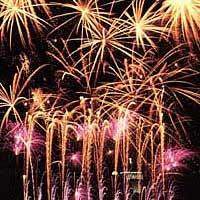
The Boston Pops Orchestra, fireworks, cannons, and church bells all come together on the Esplanade every Fourth of July in Boston. Boston's Fourth of July has become the pre-eminent Independence Day celebration in the county. The event as we know it began in 1974, but concerts on Boston's Esplanade, along the Charles River, date back to 1929 when legendary Boston Pops conductor Arthur Fiedler conducted his first Fourth of July concert. David Mugar, now executive producer and founder of Boston's Fourth of July, had become saddened and disappointed with the state of decline of the Esplanade, the Charles River, and the Fourth celebration in the early 70s. He made a deal with Arthur Fiedler: if Fielder would conduct the 1812 Overture, Mugar would round up not only fireworks, but also cannons and bells to rouse the moribund annual concert on the Esplanade. Despite minor glitches, the renewed Fourth of July was a rousing success!
Two years later, in 1976, Boston's Fourth of July helped the nation celebrate its Bicentennial with a concert that drew 400,000 people, marked by the Guinness Book of World Records as the largest crowd ever assembled for a classical music concert. Now the event regularly draws between a quarter and a half million people who marvel at the "pyromusical" fireworks display after the concert. Guest performers now share the stage with the Boston Pops; since 1987 they have included Johnny Cash, Mel Torme, Roberta Flack, and Sandy Duncan. A fly-over by military jets marks the beginning of the two-hour concert. Following the concert with its signature 1812 Overture, there is a spectacular 30-minute fireworks display.
The event is documented in five pages of narrative text, photographs of the event, several commemorative programs, a promotional brochure and site map, CDs containing the 1999 Boston 's Fourth of July Internet site, press clippings, copies of significant papers, a video of the 1999 event, and a tee-shirt.
Lighthouses have a long history in Massachusetts, the Bay State, where they were integral to shipping and fishing. Focal points of tourism today, they symbolize the state's link to the seacoast. The history of the Chatham Lighthouse began in 1808 when the first set of lights was constructed on the blugg called James' Head to act as a set of range lights for the shifting shoals of the Chatham Harbor entrance. Samuel Nye was appointed as the first Keeper of the Chatham Lights by President Thomas Jefferson on October 7, 1808. The current structure was built in 1877.
Festival of the Hills (Conway)
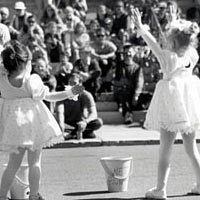
In the hills of western Massachusetts, eighty-five years ago, on July 3rd and 5th, 1915, the people of Conway, Massachusetts, held a "Pageant of Patriotism in honor of Independence Day and the 100 years of peace between the United States and Great Britain." That event, so long ago, was the inspiration for the revival of a Conway festival in 1962.
The renewed event, held to generate funds for Conway's bicentennial in 1967, featured displays of works by local artists, round and square dancing, and smorgasbord dinners. In addition to highlighting local painters and craftspeople, the Conway event soon utilized the talents of Conway's dancers, singers, musicians and actors. The Hill Town Talent Show debuted in 1964, and in its various forms since then -- skits, one-act plays, stand-up comics, instrumental and vocal virtuosi -- has become an eagerly anticipated Festival event. In the years since 1964, a 10K road race and parade have been added to the Festival. Proceeds from the present-day Festival go into a Conway Student Scholarship Fund; over the years, $30,000 has been awarded to graduating Conway High seniors.
The Conway Festival of the Hills marked its 38th anniversary with its October 3, 1999 event. Hundreds of people lined Main Street, the town's historic district, to watch the parade and enjoy food, fun, and music. In addition to arts, crafts, road race, parade, and music, a replica of the old Conway Electric Trolley took loads of the curious on a 30-minute trip along the history-filled roads and ways of the town. There were the perennial log-splitting, pumpkin-stacking, and skill-tossing contests, as well as demonstrations of wool spinning, oxen driving, bee keeping, and sustainable agriculture.
New England Confectionery Company (NECCO)
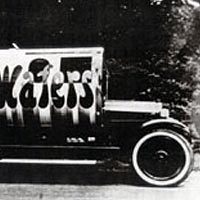
Having celebrated its 150th (sesquicentennial) anniversary in 1997, the New England Confectionery Company (NECCO) is the oldest continuously operating candy company in the United States. NECCO's roots date back to the mid-19th century when Oliver R. Chase of Boston invented and patented a lozenge cutter, the first American candy machine. His company, Chase & Co., was the forerunner to the family of companies now known as NECCO. Also a pioneer in extending employee benefits, in 1906, NECCO inaugurated a profit-sharing plan to reward those who "by faithful attendance and continuous service demonstrate their interest in the welfare of the company." In 1920, NECCO took the progressive step of insuring the lives of all its employees. In 1927, NECCO built its present manufacturing facility near the Charles River and Massachusetts Institute of Technology (MIT). It was the largest factory in the world with its entire space devoted to the manufacture of candy.
NECCO has two divisions (Stark and Haviland Candy Companies) and four manufacturing facilities (in two in Cambridge, Massachusetts; one in Pewaukee, Wisconsin; and one in Thibodaux, Louisiana) which employ about 1200 employees. NECCO is the number one supplier in the United States of the famous Valentine conversation hearts -- about 8 billion a year are produced -- thin mints and peanut butter kisses. NECCO's annual sales approach $100 million. Ranking among the top ten top sellers in the non-chocolate-candy category is the company's NECCO Assorted Wafers. In the 1930s, Admiral Byrd took 2 1/2 tons of NECCO Wafers to the South Pole, practically a pound a week for each of his men during their two-year stay in the Antarctic. The U.S. Government requisitioned a major portion of the production of the wafers during World War II, since the candy doesn't melt and is "practically indestructible" during transit, making it perfect to ship overseas to the troops. The signature product of the company, NECCO Wafers are enjoying a resurgence in popularity as the result of the increasing baby-boomer demand for non-fat sweets. In the coming years, NECCO intends to carry on its 153-year tradition of quality candy-making.
The project is documented with a company history and chronology and several pages on each of its famous candies: NECCO Wafers; Sweethearts Conversation Hearts; Mary Janes; and Clark Bars. There are also historical photographs, artwork, a newspaper article and an advertisement.
 Print
Print Email
Email